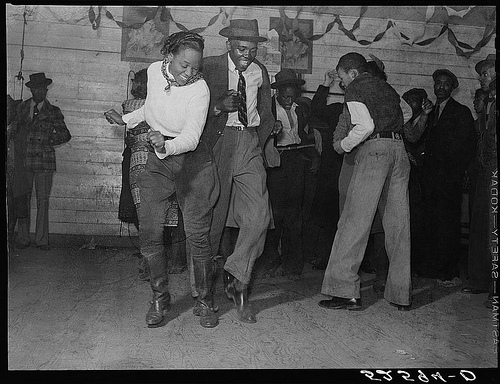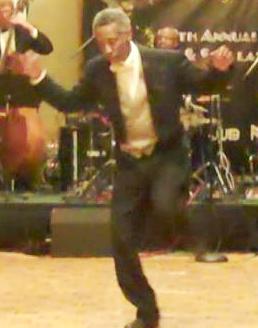

Chester Whitmore
In conjunction with
P.A.L.E.F.*
and the
Crozier Middle School "Gents" Character Building Program
present
A Central Ave Dance Ensemble Production
The History of Black Dance in America
Choreography by
Chester Whitmore
Ron Parker
For the first time in over a decade! Join us for a performance of African and African-American inspired social dances popularly danced in the United States from the 1800s to today. Click here to see our video.
Journey through time to explore the Black roots of dances such as:
|
|
|
This is an evening of both entertainment and education for the entire family.
Crozier Visual and Performing Arts Theater
124 N Grevillea Ave
Inglewood, CA 90301
(The theater is directly across the street from the Inglewood Police Department wish is part of the Inglewood City Hall complex. The theater is on the corner of Regent and Grevillea. If you make it to La Brea and Manchester, go one block north on La Brea to Regent. Turn left. Go one block West on Regent to Grevillea. Turn left. Park on the school campus.)
February 12, 2011
7:30pm
Tickets: $20 General Admission | $15 Seniors, Students, USA Dance, Dance Buddies and Smooth Dance Members
$25 Preferred Seating (Rows 3 - 5)
VIP Seating Available (Rows 1 & 2)
Coming Black History Month 2011!

Purchase Tickets
|
|
|
Valid ID is required for the following discouted admissions:
Your receipt is your ticket. Bring it with you to the show along with ID. Thank you for your generous support, and enjoy the show! |

* The Performing Arts For Life and Education Foundation, Inc. 501(c)(3) Non Profit Arts Organization
Notes from 2008 rehearsals for "A Tribute to Dunham".
In the introduction to the Pointsietta Bolero/Rumba Choreography, the question was asked about the techique that should be used for the "cuban motion". I hesitated to answer that for a couple of reasons:
As a Ballroom dancer, I know what a classic Ballroom Bolero is supposed to look like. This is NOT what we want: http://www.youtube.com/watch?v=DRUNpjmfZhM
Note the typical contemporary description for Bolero:
History of Bolero
The history of Bolero is a bit of a mystery. Bolero has the same Afro-Cuban roots as the Rumba and is thought to have originated from Cuban or Spanish folk dances such as the Danzon and Beguine. It was introduced in the United States in the 1930’s. Originally a Spanish dance in 3/4 time, it was changed in Cuba initially into 2/4 time then eventually into 4/4. The music is frequently arranged with Spanish vocals and a subtle percussion effect, usually implemented with guitar, conga or bongos.
What this really means is that there is a European and Cuban way of dancing this dance. Ms. Dunham spent time studying Carribean dances, styles and techniques (Cuba, Haiti, Jamaica), this is really what "Dunham Technique" is all about. So, to just dance Bolero/Rumba the way they are danced today as Ballroom dances I believe is a disservice to what we are attempting to do with the Dunham Tribute.
Which means I (we) need to see what Ms. Dunham actually did in this style of dancing.
One piece that I was already familiar with is Duke Ellington's "Flamingo", sung by the "Bronze Bukeroo" himself, Herb Jefferies. This number is a more of a Rumba mixed with modern and a dash of ballet: http://www.youtube.com/watch?v=XlmMzUMCIIg . I believe the Cuban motion you see here is natural and authentic, and not the very unnatural ballroom technique which is prevlent in this style of dancing today.
There is a link to a number of Katherine Dunham videos in the Library of Congress. A couple of the descriptions for listed videos refer to the following:
Rhumba Jive (2 minutes), title also given as Rumba with a Little Jive Mixed In); Choros #1 (2 minutes); Batacuda (1 minute); Bolero (1 minute);
This is what I need to find, but am currently unable to locate.